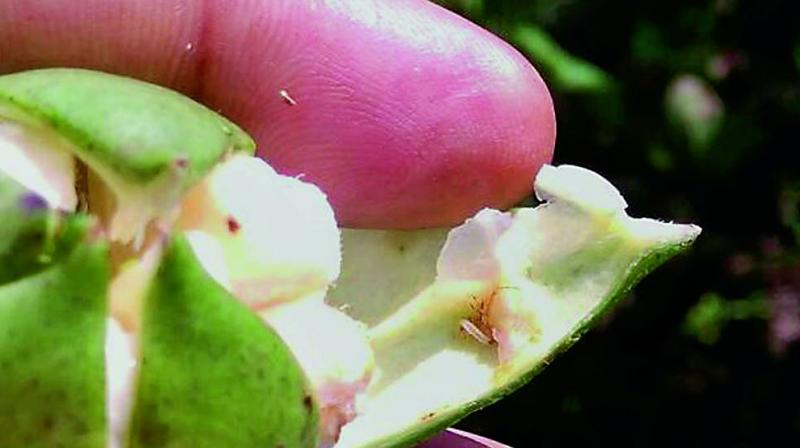Pink bollworm is back, cotton crop in trouble
Agriculture scientists say bollworms gained resistance over a period and started multiplying.

Visakhapatnam: The dreaded pest, pink bollworm, that gave nightmares to cotton farmers in the state a decade ago is back in Andhra Pradesh.
Farmers in the state’s cotton growing districts like Guntur are in distress as the pest destroyed their crop. A decade ago, these bollworm pests were the reason behind thousands of cotton farmers committing suicides The pest attack is even after sowing genetically modified BT cotton which had claimed resistance to three major bollworm types.
Pink bollworm has been cited in thousands of hectares of cotton crop in Gun-tur and some parts of Anantapur. The state government has also decided to issue notices to the seed companies as per Seed Act 1966. After the introduction of Bt Cotton, all the farmers turned to it.
There are already such bollworm attack reports from Gujarat, Maharashtra, and Karnataka. Both Maharashtra and Karnat-aka too issued notices to the seed manufacturing companies.
Agriculture scientists point that bollworms over the period gained resistance and started multiplying. “This shows that genetically modified seeds using technology are not the only solution to increase production or control pests. This will only increase the stress on the farmers besides causing other side effects. A holistic approach of cultivation needs to be adopted. The bollworm has now developed resistance to Bt Cotton,” said noted agriculture scientist, Dr G.V. Ramanjaneyulu.
Monsanto was the first to introduce Bt Cotton seeds in India that increased the production levels of cotton. Monsanto’s Bt Cotton was meant to be resistant to bollworms.
Confirming the pink bo-llworm attack, joint director of agriculture department, V.D.V. Krupa Das said that as of now the pe-st hasn’t reached ‘Econo-mic Threshold Levels’ (ETL).
However, there are indications that ETL may be breached pushing farmers into economic losses. He ruled out any outbreak.
Cotton sowing this year decreased to 1.40 lakh hectares in Guntur whereas annual extent has been 1.80 hectares. “As per the field functionaries’ repo-rts, there has been incidence of pink bollworm attack on cotton crops. This is after almost 12 years that the pest is seen in cotton crop. It’s seen majorly in Palnadu area. As per initial reports, the pest has attacked around 1,800 hectares. As the sample size is less, we have already started a fresh survey and also a campaign to educate cotton farmers on how to calculate ETL and accordingly take corrective measures like chemical treatment. The government is also assisting the farmers in chemical treatment if found higher ETL. This year, pink bollworm incidence is comparatively less than in the earlier years. We will issue notices to seed manufacturing and supplying companies as done last year,” said Mr Krupa Das.

